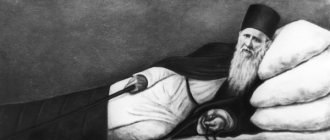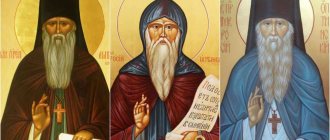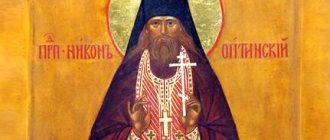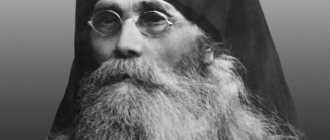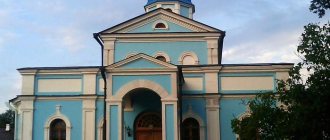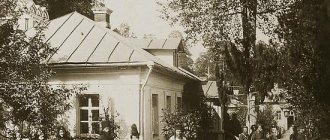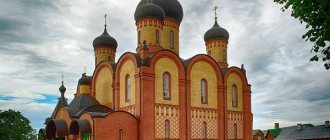Convent in honor of St. Ambrose of Optina in the village of Rusakovo, Slonim district
On September 29, 2005, with the blessing of Archbishop Gury of Novogrudok and Lida, five sisters of the Annunciation Convent in the city of Slonim were sent to the village of Rusakovo, Slonim region, to establish a women’s monastic monastery.
In 2006, in the village of Rusakovo, the Sisterhood in honor of St. Ambrose of Optina of the Novogrudok diocese of the Belarusian Orthodox Church was officially registered.
In December 2022, the elder sister of the Sisterhood turned to Archbishop Gury with a request to transform the Sisterhood into a convent of the same name. In accordance with paragraph 36 of Chapter. 7 of the Charter of the Novogrudok Diocese, this petition was considered and approved by the Diocesan Council. The question of the possibility of transforming the Sisterhood into a convent was also comprehensively studied and received approval from the Synodal Department for Monasteries and Monasticism of the Belarusian Orthodox Church.
On June 8, 2022, a regular meeting of the Synod of the Belarusian Exarchate was held, at which a report was heard from Archbishop Gury of Novogrudok and Slonim with a petition to transform the Sisterhood in honor of St. Ambrose of Optina of the Novogrudok diocese of the Belarusian Orthodox Church into a convent of the same name.
Having considered the report of Bishop Guria, the Synod of the Belarusian Orthodox Church decided to bless the transformation of the Sisterhood into the religious organization “Convent in honor of St. Ambrose of Optina in the village of Rusakovo, Slonim district, Novogrudok diocese of the Belarusian Orthodox Church.” The Synod also established that the religious organization “Convent in honor of St. Ambrose of Optina in the village of Rusakovo, Slonim district, Novogrudok diocese of the Belarusian Orthodox Church” is the legal successor of the Sisterhood in honor of St. Ambrose of Optina, Novogrudok diocese of the Belarusian Orthodox Church. It was also decided to approve the charter of the newly formed monastery and submit it for registration in the manner established by the legislation of the Republic of Belarus.
On the territory occupied by the monastery there is a temple, several houses in which cells for sisters, a library, refectories are located, and construction of a clergy house has begun.
Nun Makaria (Matyash Natalya Vasilievna) was appointed abbess of the newly formed monastery, with her elevation to the rank of abbess ex officio.
There are 12 nuns working in the monastery: 3 nuns, 2 nuns, 2 novices and candidates for novices (2021).
CONTACTS:
231822, Republic of Belarus, Grodno region, Slonim district, Zhirovichi village, Rusakovo, 18
Duty telephone: +375 44 7560082 Email
MONASTERY WEBSITE
Here in our monastery is an earthly paradise...
July 7 - Nativity of the venerable, glorious Prophet, Forerunner and Baptist of the Lord John, patronal feast of Optina Hermitage
The image of St. John the Baptist on the watchtower at the entrance to the monastery of Optina Pustyn
The days of remembrance of the glorious and honest Prophet, Forerunner and Baptist of the Lord John, which are celebrated several times a year, in Optina Hermitage are special, patronal holidays of the St. John the Baptist monastery, which is located in the monastery forests.
Church of the Baptist in the monastery of Optina Pustyn
The main temple of the monastery, where services are performed according to a special monastery charter, was built in 1822. This wooden temple was cut down from the very forest that grew on the site of the monastery. It was consecrated in honor of the feast of the Council of the Baptist and Baptist John.
Pilgrims are allowed to attend these services—“open” liturgies—only four times a year. There are such days during every season of the year; they coincide with major holidays. In winter it is January 20 - the Cathedral of John the Baptist, in spring - Monday of Bright Week, in summer - July 7, the Feast of the Nativity of John the Baptist and Baptist of the Lord; and, finally, in the fall - September 11, the day of the Beheading of John the Baptist.
“Our monastery is a kind of station from earth to heaven,” such a succinct definition was given by the famous artist D.M. Bolotov (1837-1907), who later became hieromonk Daniel, who labored in the monastery of St. John the Baptist.
* * *
Father Pavel Florensky called Optina Pustyn, which at the beginning of the 19th century, through the efforts of Metropolitan Platon (Levshin) of Moscow and then Bishop Filaret (Amphiteatrov) of Kaluga, turned into a growing cenobitic monastery, “a spiritual sanatorium for many wounded souls.”
The beginning of desert living here was laid by Schemamonk Ioannikiy, who lived at the beginning of the 19th century in the depths of the monastery forest in a small apiary.
Six years after his death, with the blessing of His Grace Philaret, the hermits of the Roslavl forests moved here, among whom were the elders Moses and Anthony. They were entrusted with the construction of the monastery - 170 fathoms from the monastery..
“1821, June 17th. May God bless the building of the monastery with His grace and help us to complete it,” Bishop Philaret wrote on the plan of the monastery.
Father Moses and his brothers had hard work ahead of them: they had to clear a huge area of centuries-old pine trees to build a monastery. Both brothers - Father Moses and Father Anthony - together with hired workers, felled pine trees and uprooted stumps.
The dedication of the church to the saint, revered as the first desert dweller, gave the name to the monastery. Hegumen Daniel admonished the monks:
“May the blessing of the Jordan desert and all those who were silent there be in this place!”[1]
A particle of the relics of St. was placed under the altar of the temple. John the Baptist. On February 5, 1822, the church was consecrated by Abbot Daniel.
Gradually, houses of fraternal cells appeared around the Church of the Baptist. Fruit trees and pine nuts were planted, which turned into slender trees and bore fruit after 25 years.
The goal of life in the monastery was considered to be “during unanimous living, the deepest silence, necessary for the purification of the inner man, combined, moreover, with attentive examination of oneself and constant prayer, which creates peace of the heart and elevates the human spirit, by the grace of God, above the visible world”[2].
In 1825, Bishop Filaret, accepting the Kyiv diocese and leaving Kaluga, appointed Father Moses rector of Optina Hermitage. After Father Moses, his younger brother Father Anthony became the head of the hermitage.
* * *
It was here, in the monastery, that the eldership (an “institute” in Orthodox Rus' by that time had been fairly forgotten) was born, making this fertile place the “spiritual heart” of Optina.
S.S. Bezobrazov (later Bishop Cassian of Catania) wrote that “Optina Pustyn and in it, as the center of her life and her work, the Forerunner monastery occupied an important place in the history of the Russian public and Russian spiritual culture”[3].
But the Monk Moses was overloaded with complex duties as a superior, and the Monk Anthony was in poor health to take over the leadership of the eldership.
The founder of the eldership in Optina was Hieroschemamonk Lev (Nagolkin), invited by the Monk Moses, who, like himself, was experienced in spiritual and ascetic life, possessing the gift of reasoning, firm and courageous, who could overcome all obstacles on the path to its establishment.
Elder Leo and his disciple Father Macarius (Ivanov) were inspired, like the Monk Moses, by the legacy of the Monk Paisius Velichkovsky, a Moldavian elder, a revivalist of spiritual work in monasticism.
During the years of the abbot of the Monk Moses, the monks of Optina, together with a group of like-minded laymen, were the first to publish in Russian the translations from Greek of the great ascetics of antiquity: Isaac the Syrian, Macarius the Great, and John Climacus.
The beginning of the 1840s can be considered the time of complete establishment of eldership, which was strengthened thanks to the activities of St. Macarius. And the eldership reached its heyday under the Monk Ambrose (Grenkov), to whom people of different classes and ages flocked from all over Russia for advice and consolation.
That is why, before the revolution, the flow of pilgrims did not dry up, seeking advice and consolation from the gracious Optina elders, and that is why Optina Pustyn gained its fame throughout Holy Rus'.
Yes, and outside the Fatherland. Many foreigners who visited Optina and its monastery, under the influence of Father Ambrose and other Optina elders, accepted Orthodoxy right in the monastery.
It was Father Ambrose who became the prototype of the famous elder Zosima in “The Brothers Karamazov” by F.M. Dostoevsky. After the death of his three-year-old son, he went to Optina.
“This is a penitent,” this is how the elder subsequently spoke about Fyodor Mikhailovich, with whom the writer was able to talk several times.
* * *
Another great elder is Schema-Archimandrite Barsanuphius (Plikhankov), a famous ascetic of Russia at the beginning of the 20th century, who was the head of the monastery in those years.
Turning to one of the elder’s poems, one can imagine the external and internal, spiritual appearance of the monastery and monastery during the heyday of Optina:
...The legacy of centuries is a shady forest. On its sides there is a dense forest: There is silence in it, there is space for silence, Complete freedom for the feelings of saints and thoughts: Only sometimes the noise of the trees can be heard there, When their tops are shaken by the flying wind. The heavens are clearer here and their azure is purer... Carrying a worldly yoke and making a sorrowful journey Amidst the darkness and rapids of life's thorny path, I was privileged to see a glimpse of paradise.
Leo Tolstoy visited Optina six times. He came to the monastery for the last time in 1910, shortly before his death, having already been excommunicated from the Church. Lev Nikolaevich intended to talk with the elders, but did not dare to enter the Baptist monastery.
On his deathbed, Lev Nikolaevich asked to send a telegram to Optina with a request to send an Optina elder to him.
The Monk Barsanuphius came to the writer. But Tolstoy’s relatives, including his secretary Chertkov, did not allow the elder to see the dying man.
The Monk Barsanuphius suffered greatly from the fact that he could not at the last moment accept repentance, reconciling the great writer with the Church.
“You only knew how to love, only do good...” - this is what the spiritual son of St. Ambrose said after the death of the elder, and then the spiritual son of St. Barsanuphius, Metropolitan Tryphon (Turkestan).
* * *
After the revolution, the monks of Optina and the monastery were exiled or shot. The last head of the monastery, Venerable Nektarios, was arrested in 1923. After leaving prison, he lived in the Bryansk province - first in the village of Plokhino (now Ulyanovo, Kaluga region), then in the village of Kholmishchi (now Kaluga region), where he died in 1928.
The monastery was turned into a children's sanatorium. It was always full of children with young mothers, and all the sick people got better in it surprisingly quickly.
During the years of Soviet power, the temples and bell tower of the Forerunner Skete lost their heads, and some shrines were lost. The fence of the monastery was broken. Many trees in the grove that separated the monastery and the monastery were cut down.
However, according to Vladimir Soloukhin, “the monastery and everything in the monastery survived more intact and intact than in the main monastery. The half-kilometer distance from Optina, the smaller capital and strength of the monastery, especially the outer wall (but also other buildings), indirectly helped it survive, and the destructive wave seemed to roll over it.”[4].
In 1967, thanks to the efforts of the director of the Kozelsky Museum of Local Lore V.N. Sorokin, a literary department of the museum was opened in the Predtechensky monastery. The exposition was dedicated to L.N. Tolstoy, the Kireevsky brothers, Gogol, Dostoevsky.
The monastery has preserved the houses where Gogol and Dostoevsky stayed.
On February 1, 1990, most of the skete of St. John the Baptist was transferred to the Optina Desert (the other part remained with the literary department of the Kozelsky Museum until 2005). On March 18, 1990, the Church of St. John the Baptist.
The monastery is currently closed to pilgrims and women. The exception is the cell of the Monk Ambrose in the “shack”. It has become a memorial and is open to visitors.
Nowadays, the cycle of services in the monastery, as in former times, begins with the Midnight Office, which takes place at two in the morning, then Matins and the first hour, the duration of this service is about three hours.
Elder Barsanuphius attached special importance to night prayer. He told the Monk Nikon that “our entire skete life is held together at Matins.”
“Here in our monastery is an earthly paradise,” wrote the Monk Nikon of Optina about the life of the brethren. “On our gate, on the side facing the monastery, towards the church, it is written: Since Thy village is beloved, O Lord (Ps. 82:2), and truly so.”
Yes, truly so!
[1] Chronicle of the monastery. 2008. T. 1. P. 16.
[2] Leonid (Kavelin). 1862. P. 85.
[3] OPI GIM. F. 521. Op. 1. Unit hr. 35. L. 10-10 vol.
[4] Soloukhin V.A. Time to collect stones // Collection. op. M., 1984. T. 3. P. 474.
Prepared by Nikolay Golovkin
Optina Pustyn

